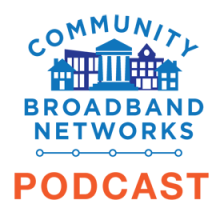Garrett County Builds Better Connections By Combining Technologies in Rural Maryland - Community Broadband Bits Podcast 275

Maryland may be home to our nation’s bustling, urban capital, but on the other side of the state are the Appalachians and many rural communities that struggle with poor Internet access. One of those communities is Garrett County. Residents, businesses, and institutions have limped along for years using outdated connections. Some people don’t have any access to the Internet; all that is changing.
In episode 275 of the Community Broadband Bits podcast, the county’s Natural Resources Business Specialist Cheryl DeBerry and county CIO Nathanial Watkins join Christopher to discuss the initiative that is changing the local connectivity landscape.
Cheryl, Nathaniel, and Christopher discuss the project that combines fiber, fixed wireless, and TV white space technologies in order to reach people and businesses across the county. They also talk about how a significant portion of people in the rural community simple can’t afford the high cost of satellite and how mobile Internet access just doesn’t cut it in a rural area like Garrett County. Cheryl describes how the project is an economic development initiative and Nathaniel shares more details about their need to combine technologies and the results.
This show is 23 minutes long and can be played on this page or via Apple Podcasts or the tool of your choice using this feed.
Transcript below.
We want your feedback and suggestions for the show-please e-mail us or leave a comment below.
Listen to other episodes here or view all episodes in our index. See other podcasts from the Institute for Local Self-Reliance here.
Thanks to Arne Huseby for the music. The song is Warm Duck Shuffle and is licensed under a Creative Commons Attribution (3.0) license.


